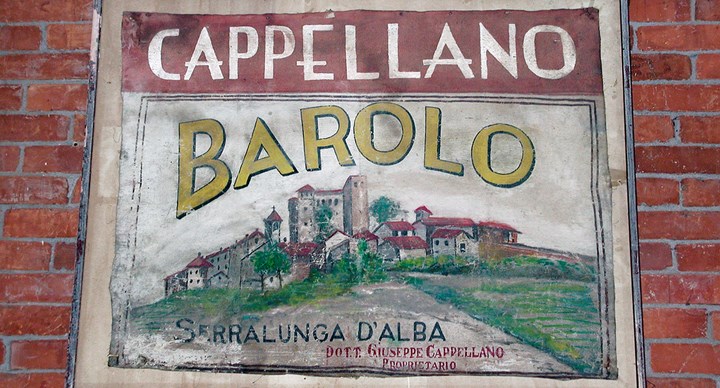
Which site would you like to visit?
By clicking the retail or wholesale site button and/or using rarewineco.com you are choosing to accept our use of cookies to provide you the best possible web experience.

Barolo is an area where fiercely independent people make extraordinary wines. Yet, even in such company, Teobaldo Cappellano, who passed away on February 21, 2009, stood out for his unique philosophy, his meticulous winemaking and the profound character of his wines.
A legend in Barolo—and among artisanal growers throughout Italy—Cappellano was one of the last of the region’s great traditionalist winemakers—and he was one of Barolo’s most compelling personalities. In 1983 he banished all journalists from his cellar, unless they agreed to review his wines without scores. (He saw ratings as divisive among growers.) And he may have been the only person who, during his lifetime, made a Barolo from ungrafted vines.
With his passing, his son Augusto will continue Teobaldo’s important work, which includes producing the family’s renowned Barolo “Piè Franco” and Barolo “Rupestris”
The near-universal admiration accorded Cappellano was striking, given that his attitudes were often controversial. Variously described as a “wine artist,” “professional polemist,” and a “poet, philosopher and winemaker in his spare time,” he was president of the influential Vini Veri (or “true wine”) group. He was also a longtime leader of Italy’s sustainable agriculture movement.
Cappellano has been compared to Bartolo Mascarello, both as a beloved figure and in the depth of his views. And his Barolos were just as firmly rooted in local traditions as were the late Mascarello’s.
Cappellano made fewer than 800 cases of Barolo per year, all vinified traditionally: a fermentation of 14 to 21 days with indigenous yeasts and aging in well-seasoned botti for at least three years. His tiny production quickly disappeared into collectors’ cellars in Italy, Switzerland and Germany. As Antonio Galloni once wrote, “Cappellano’s wines are impossibly hard to find, even in neighboring Alba.”
The Barolos that Cappellano made are classic “old-style” wines, marked by a haunting scent of dried roses and a hint of truffle. Yet, because of his stance on ratings, little has been written about them in America.
He made two Barolos—both from the mythic Gabutti vineyard on Serralunga’s best slope. (A few years ago, he removed the Gabutti designation from his labels to protest the expansion of the appellation to include inferior sites.)
Two-thirds of his Barolo production was Barolo “Rupestris,” from a parcel planted on grafted rootstock in the 1940s. The grapes from this parcel produce a Barolo of superb depth of color and remarkable richness and length.
His other Barolo was the mythic “Piè Franco,” from a parcel planted on its own roots with Nebbiolo’s “Michet” clone in 1989. The ethereal delicacy of this great wine made Cappellano wonder if this is what Barolo tasted like before Phylloxera.
He also continued his family’s tradition of making a small amount of their legendary elixir, Barolo Chinato, an infusion of Barolo with quinine bark, clove, wormwood and cinnamon and a small amount of cane sugar.
For Cappellano, winemaking was an art. As he told Maurizio Rosso in The Mystique of Barolo, “Making Barolo is hedonism, it is art. Wine is hedonism. But wine, too, needs identity: I need to be able to say “This is Barolo.”
For the last three years of his life, The Rare Wine Co. represented Teobaldo Cappellano in the state of California, and we considered it a great privilege to share the joy and beauty of his wines with Americans. He was a once-in-a-generation winemaker who not only made great wine, he encouraged us all to expect more of ourselves.
His son Augusto will carry on Teobaldo’s legacy, assuring us of many more great Cappellano Barolos. Schooled by his father not only in the art, but the philosophy, of winemaking, we can expect nothing less.
| Year | Description | Size | Notes | Avail/ Limit |
Price | |
|---|---|---|---|---|---|---|
 1995
1995
|
1995 Cappellano Barolo Pie Franco | 1 | $1,195.00 | add | ||
 1996
1996
|
1996 Cappellano Barolo Pie Franco | 1 | $1,150.00 | add | ||
 2005
2005
|
2005 Cappellano Barolo Pie Franco 1.5 L | 1.5 L | 1 | $1,495.00 | add | |
 1998
1998
|
1998 Cappellano Barolo Pie Rupestris | 1 | $595.00 | add | ||
 2006
2006
|
2006 Cappellano Barolo Pie Rupestris (ex-domaine 2016) | 1 | $395.00 | add | ||
 2006
2006
|
2006 Cappellano Barolo Pie Rupestris 1.5 L | 1.5 L | 1 | $950.00 | add | |
 2013
2013
|
2013 Cappellano Barolo Pie Rupestris | 2 | $345.00 | add |
New discoveries, rare bottles of extraordinary provenance, limited time offers delivered to your inbox weekly. Be the first to know.
Please Wait
Adding to Cart.
...Loading...


By clicking the retail or wholesale site button and/or using rarewineco.com you are choosing to accept our use of cookies to provide you the best possible web experience.

